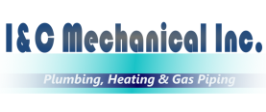Summer holds a special place in most people’s hearts. It’s a sacred time to be outdoors, take vacations, go swimming, play baseball, ride bikes, visit with friends and do all the fun things we like to do when the weather is nice.
Children are out of school, and there are summer barbecues and gatherings of friends. We host family reunions, graduation parties, wedding celebrations, visits and other occasions. We go on vacation and look forward to all the warm-season fun.
All of the activities mean increased traffic in your home, including many more flushes of the toilet, loads of clothes to wash and dishes to clean. You’re bound to use the hose more in the summer to fill pools, water flowers and sprinkle the lawn. Many people also need to take more showers during the summer months.
Too often, we run around worrying about the meat rub and tablecloth color for our parties and never question whether the home’s utilities are ready for all the extra summer traffic. Plumbing remains as one of the most important of those utilities, because the system of pipes and pumps that brings water to us and sends it away are essential to basic sanitation and nutrition. One unpleasant plumbing problem can cancel out the best food and most beautifully appointed table. Read more









